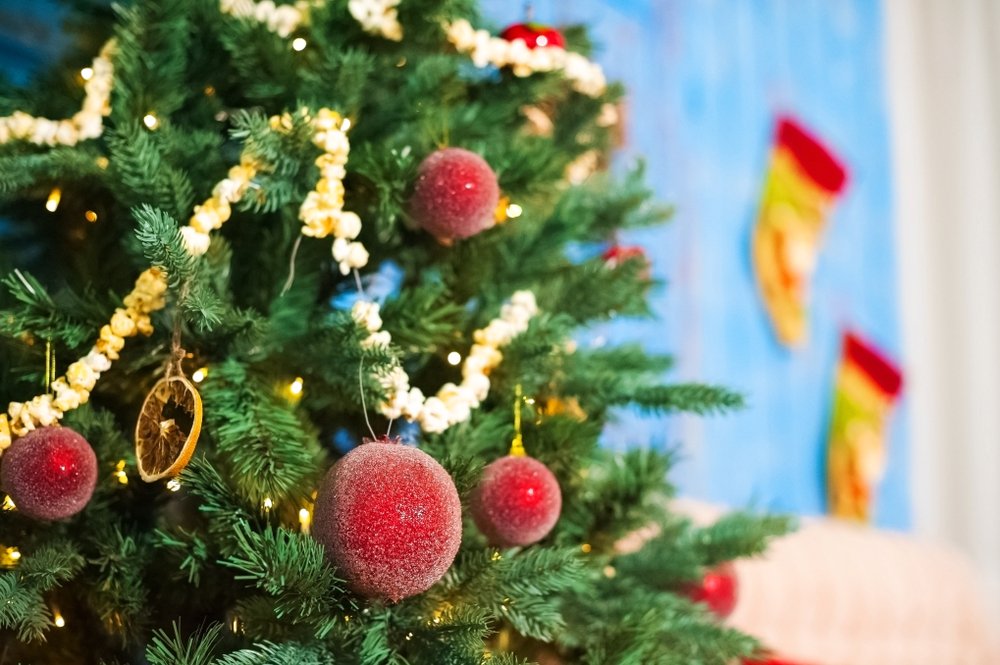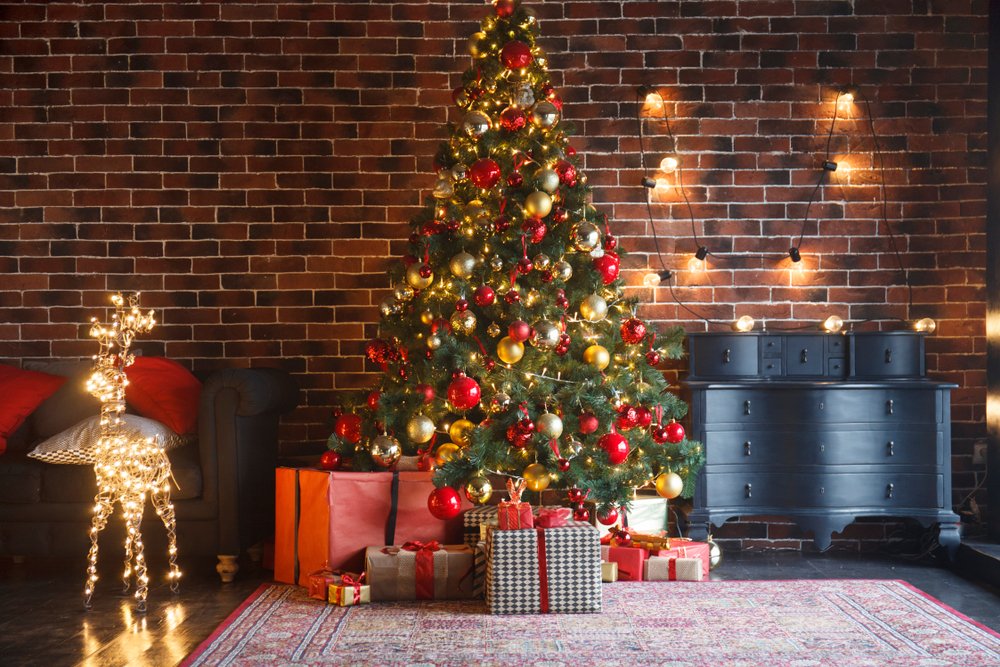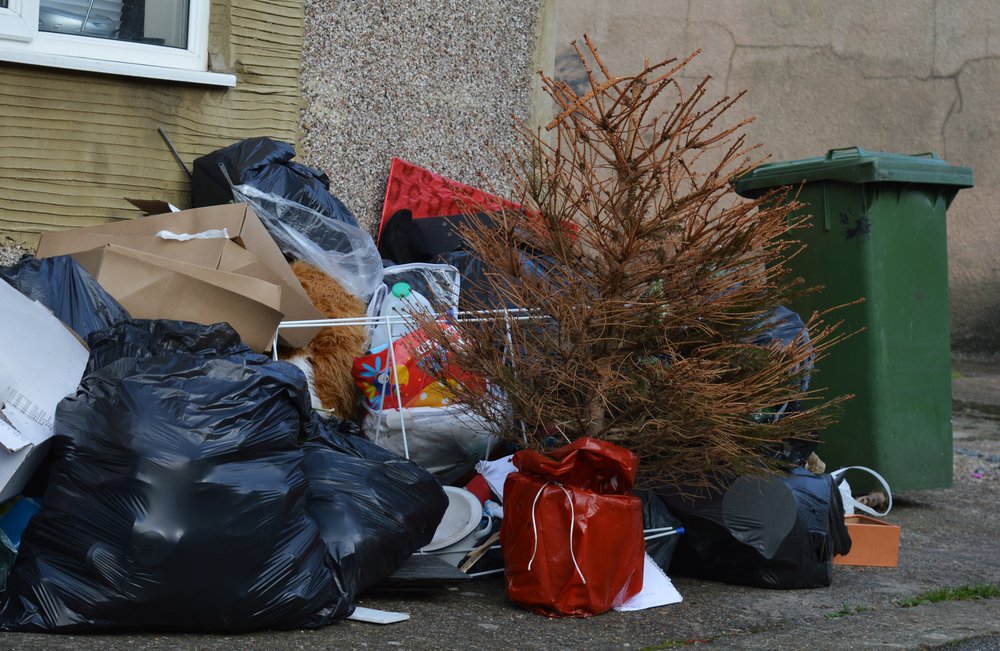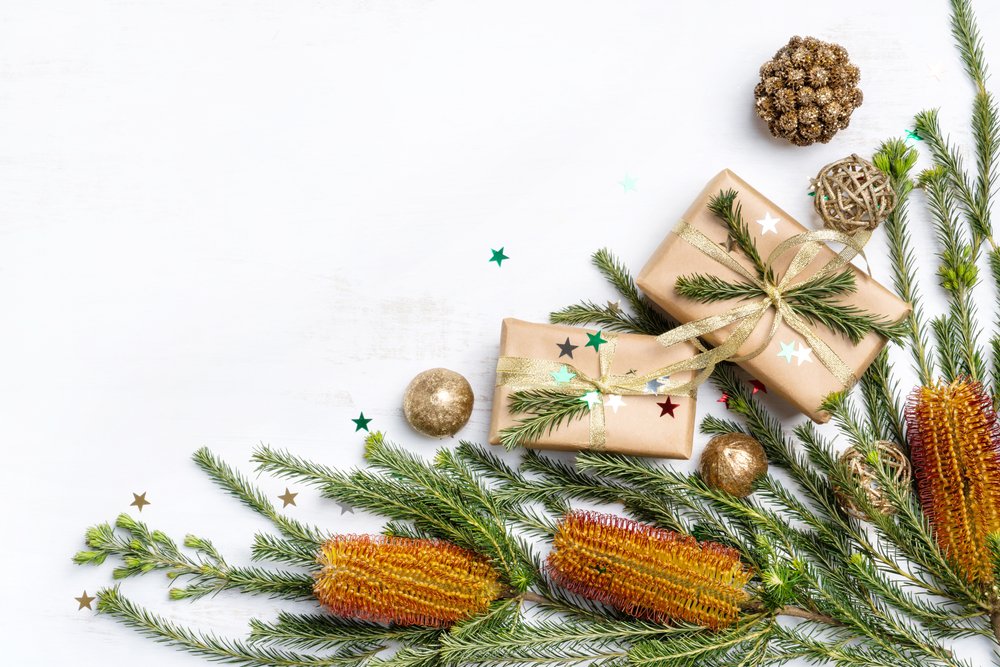While artificial trees are more popular than ever, and more realistic styles available, there’s still nothing like a live Christmas tree! No matter how realistic an artificial tree is, it can’t compete with the smell and feel of a real tree. In fact, some people believe Christmas isn’t Christmas without a real tree to enhance the Christmas ambience in the home.
However, Australian Christmases are notoriously hot and this can lead to trees dying before Christmas Day even arrives. No matter what kind of Christmas tree you have, once it’s indoors, the goal is to keep the tree fresh and green throughout the festive season. Today w are going to discuss how to care for your live Christmas tree.

What are the Origins of the Christmas Tree?
Long before the advent of Christianity and Christmas as we know it today, the symbolic use of evergreens goes back as far as ancient Egypt and Rome. Just as we decorate our homes during the festive season with Christmas trees, ancient people hung evergreen boughs over the doors and windows. This practice was done to keep witches, illness, ghosts and evil spirits out of the home.
Germany, however, is credited with starting the modern Christmas tree tradition. In the 16th century, devout Christians brought decorated threes into their home. There are accounts that Martin Luther was the first to add lighted candles to the Christmas tree to replicate the brilliance of the stars twinkling among the trees at night.
In 1864 Queen Victoria and Prince Albert were sketched standing with their children around a Christmas tree. Victoria was exceptionally popular with the people and the Christmas tree became popular in both Britain and East Coast America. By the 1890s Germany began selling Christmas ornaments to the rest of the world to decorate the now popular Christmas tree, though homemade ornaments were still popular. These homemade decorations were apples, nuts, marzipan, popcorn, and berries. Today, we have replaced these easily spoiled (and eaten!) decorations with robust ornaments that can survive the chaos of modern home life.
Caring for Cut Live Christmas Trees
One of the worst things to happen during Christmas is watching your tree die. In order to protect your tree and help it last the festive season, we recommend buying your live Christmas tree as close to Christmas as possible. This helps keep it looking fresh. When picking a cut tree, make sure it doesn’t appear to be wilting already. Try to get the cut base into a bucket of water as soon as possible.
Once indoors, a live tree’s branches will relax and open. You need to allow enough space for the tree to let its lower branches fall open and not get in the way of foot traffic.
Water and Your Christmas Tree
Once you get your Christmas tree home, you need to get it into water immediately. While some places say you can keep your tree out of water up to 8 hours, it is better not to risk it and have your tree dry out. You should check the water level daily, and even more often than that if you have indoor pets. They might use the base water as a water bowl and unknowingly dry out your tree. The bigger the tree, the more water it will need to consume to stay alive for Christmas. If the water level drops below the trunk, the trunk may seal itself up and not be able to absorb water. You will then need to cut the stump again. Normal tap water is all you need to keep your real Christmas tree fresh.
There are plenty of “hacks” online to revive or extend the life of your tree. From aspirin to lemonade to bleach, these concoctions will not help your tree. In fact, it places small children and pets at more risk if they decide to take a sneaky drink from the tree base.
You need to treat your tree like you would a cut flower in a vase. The base of the tree must remain submerged in water and should be continually topped up. A tree not set in water will dry out and die before Christmas Day arrives.
Use the Right Stand
Using the right Christmas tree stand. It should comfortably fit the diameter of your tree’s trunk. You shouldn’t whittle the trunk down to fit as this will dry the tree out faster. Your tree stand should also provide at least 1litre of water per 2.5cm of stem diameter. As a result, you need to choose a stand with a large water reservoir as a tree can take up almost 4 litres of water in the first few hours in the stand.

Choose the Right Space for Your Christmas Tree
A tree, that has spent years growing in a field with plenty of rain, water and sunlight, your house is as inhospitable as a desert. And when placing trees we tend to choose bright, sunny windows that light up the tree for that perfect Instagramable moment. Instead, you should avoid sunlit windows, TVs, and other heat sources in the home as they will rapidly dry your tree out. You should also avoid areas that are in the direct line of an air conditioner, as this can also dry out the tree. Place the tree in a cool place in the house where practical.
Refreshing a Christmas Tree
When you get home with your Christmas tree, it is recommended that you make a straight cut across the base, taking off around 2cm, before placing it in water. Cut trees can close up their trunks quickly, which means your tree won’t get critical water (remember, a freshly cut tree needs to take in about 4litres of water as soon as it gets home). This simple measure will better enable your real tree to absorb sufficient water.
And, as magical as it might be to come home to a sparkling tree, it is important to turn tree lights off over night or when no one is home. Not only can the heat of the lights dry out your tree, lights are a fire hazard and should only be on when someone is home to monitor them.
How Long Does a Christmas Tree Last?
If you properly care for a live Christmas tree it should last at least 4 weeks before drying out. But remember, even with daily watering cut trees will eventually dry out. When the needles begin to drop when you touch them, and the branches droop so low that ornaments are hitting the floor, your Christmas tree has dried out. It is time to properly dispose of your tree.

How to Dispose of a Christmas Tree
There are many ways to dispose of a Christmas tree. The saddest and worst end for a tree is to end up in landfill. There is so much more that can be done with a tree than to increase landfill. Recycling your tree not only reduces landfill, it reduces littering, dumping and will minimise greenhouse gases.
Some people saw off branches and use them to cover garden beds to protect plants. You can also mulch the tree in a chipper or shredder to use on your garden. If you’re on a large property, you can place the tree in an out-of-the-way spot for birds and animals to use as cover.
Some groups and communities collect dead Christmas trees to make mulch and compost to offer back to residents. Even zoos collect Christmas trees as enrichment tools for the animals. Enquire with your local zoo if they are interested in donated trees.
Consider Potted Live Christmas Trees
If you can’t bear the idea of cutting down a tree, or caring for your live Christmas tree is too time consuming, why not try a potted Christmas tree? Pines and European Spruces are two commonly used species for traditional potted Christmas trees. It is best to pot your tree in a lightweight pot, so it’s easy to move around. Ensure you have a saucer under the pot to catch any excess water as good drainage is important.
You should keep your tree near a window that receives filtered morning light but is protected from hot afternoon sun and heat.
Potted pines are hardy but fast growing. Trim them constantly through their growing period to keep them in shape. Never cut back into bare branches as they generally don’t reshoot from bare wood. Potted trees reach 3-5 feet. Trees getting larger will need to be planted in the garden as they will become cumbersome to move in larger pots.
As with houseplants, potted Christmas trees require the right amount of watering. When they dry out, they very seldom recover. Water too much and your tree will die of “trench foot”. Water too little and the tree will turn brown and fall. It is best to check the soil every day to make sure it isn’t drying out. Even small Christmas trees have a lot of roots which will dry out the soil quickly.
After Christmas you should repot your tree into a larger pot so it is healthy and ready for the next year.

Alternative Christmas Tree Ideas
The most sustainable, low maintenance Christmas tree is a homemade arrangement of branches or a potted plant like an Australian native pine. This is something you can use year after year. Drooping branches of a young eucalyptus tree look fantastic decorated with lights and ornaments and brings a touch of Australiana to Christmas. A beautiful silver birch brings a stunning white trunk to the Christmas scene, allowing you to work your Christmas tree into your décor. While plastic trees look realistic and can be used year after year, they are very rarely made from biodegradable plastic. Plants, live cut Christmas trees and branches are renewable resources, 100% biodegradable and easily recycled. Plastic Christmas trees are generally made of non-recyclable, non-degradable plastics and metals that fill up landfills.
No room for a tree? There are some festive plants you can use instead. Why not try some poinsettia? Poinsettia has become a recognised symbol of Christmas with long-lasting, bright red flower bracts mixed with their dark green leaves.
Visit Aumanns today to find out more about caring for your live Christmas tree and other alternative Christmas plants for your home!

